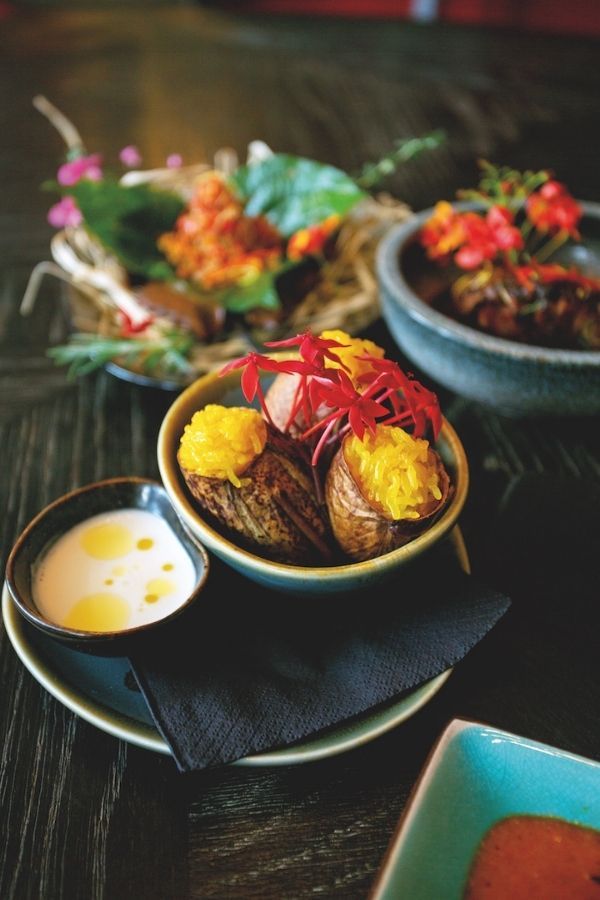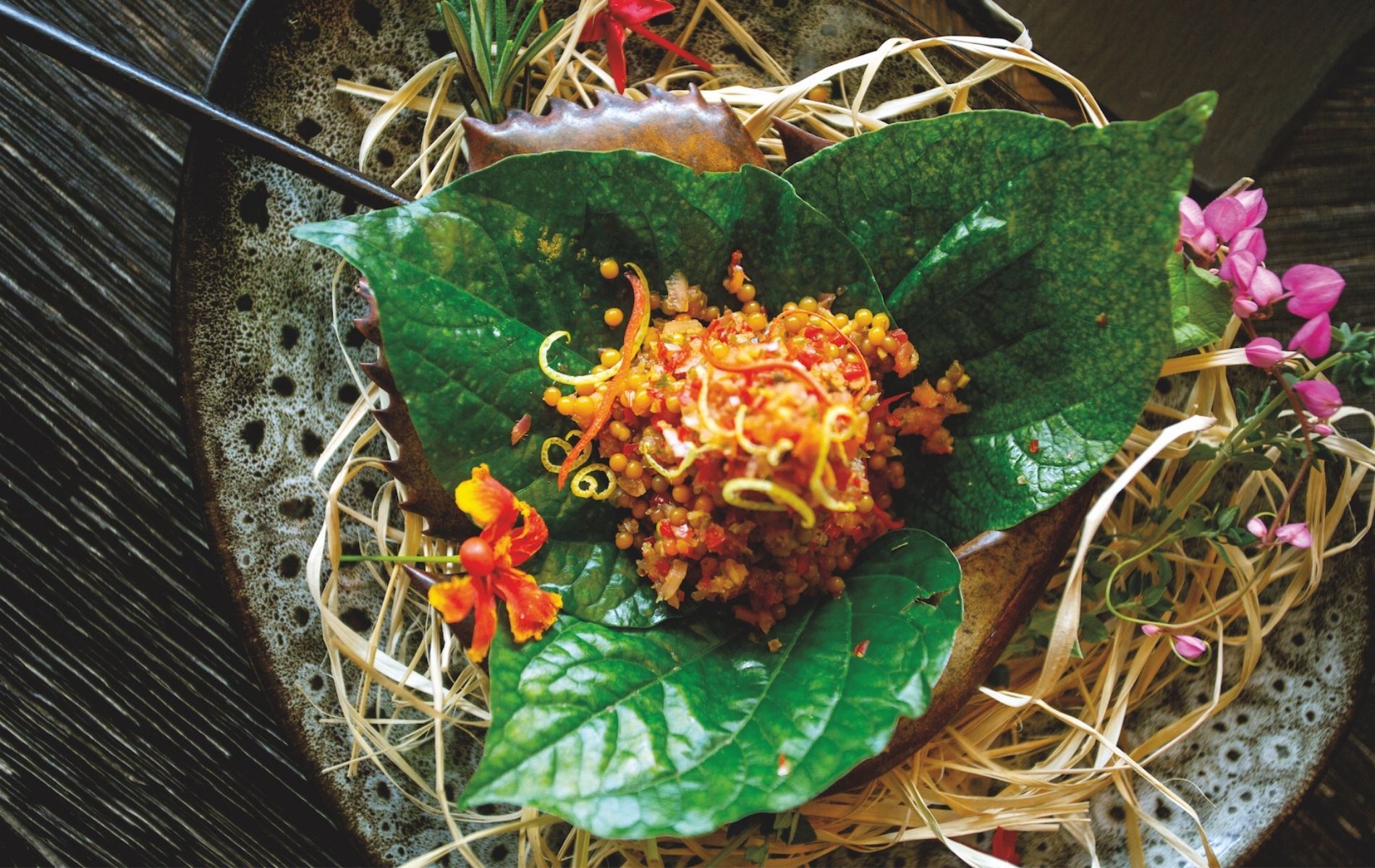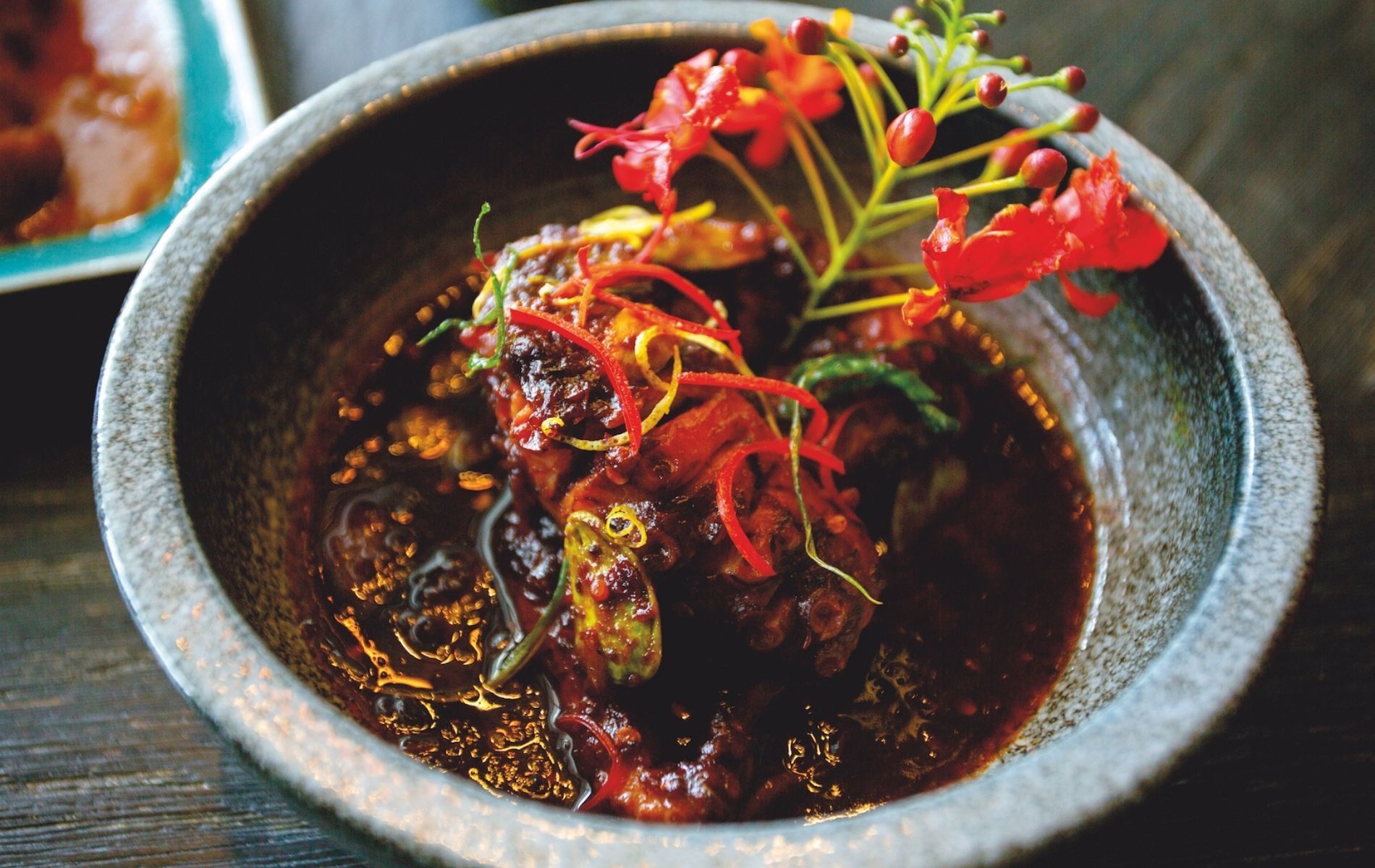The co-founder of OpenHouse takes us on a journey of celebrating local ingredients and traditional dishes through a modern, finer dining experience
“My mother and grandmother’s cooking” would undoubtedly be one of the first answers off the top of your head if you were to be asked what you think about good, authentic Malaysian food. Countless recipes have been passed down from generation to generation, and it’s only natural that some get lost or forgotten in the process. Authentic traditional Malaysian dishes are without question our famous nasi lemak, char kuey teow, roti canai, and everything in between. But what exactly goes into the process of making these amazing, bold flavours that blend so well together and are the pride of our nation? Are there a lot more ingredients out there for us to explore and discover? Or rather, is there a lot more for us to go back to and relearn the origins of our truly Malaysian dishes?
We sit down with the co-founder of OpenHouse, Andrew Wong, to talk about the birth and concept of the restaurant, as well as the importance of recognising the richness that can be found in our own backyards and putting that on the global map in time to come.
See also: Bakebe, Hong Kong's First App-Based Baking Studio, Opens In Kuala Lumpur

THE START OF SOMETHING TRADITIONAL
What began as a germ of an idea turned into an incredible journey back to the roots of Malaysian cuisine. “I’ve always felt that there was something in Malay cuisine that was never quite explored,” expressed Wong. There are countless Chinese, Indian, Thai, and Japanese restaurants that serve their food in a finer dining experience, but we aren’t able to say the same of Malay restaurants as they are few and far between.
Centrally located in Suria KLCC, OpenHouse brings its customers a finer dining concept of Malaysian cuisine that serves not only Malay food but also an array of Peranakan, Indian, and Chinese takes on certain dishes, making them truly Malaysian. “I gave my team a challenge—to go back to their hometowns, bring back recipes that villagers would eat that we have probably never eaten in the city, and that was it.”
That particular challenge sent 15 staff back to their hometowns and presented Wong with over 150 dishes. “It was a lot of food tasting!” he laughs as he recalls trying to narrow it down to what they have on the menu today. It was a seven to nine-month gestation period which gave Wong a heavy heart as he had to cut so many dishes out and present only 44 of them in the restaurant. “It was such an amazing experience, because each and every one of them—from the top chef to the junior chefs—were so proud to share whatever they had, and of course it was heart-wrenching to cut these dishes out because it was so deeply personal to them,” he said, gesturing with his hand over his heart.
It truly is a journey through Malaysia, as dishes were brought back from the north and the south as well as from Sabah and Sarawak. One of their biggest challenges was to be able to present them in a way that not only impresses customers and sparks their curiosity when they see the dish, but also be respectful of the traditions, origins, and heritage found in its flavours.
See also: The Chow Kit Kitchen & Bar Celebrates Malaysian Roots With New Localised Menu





